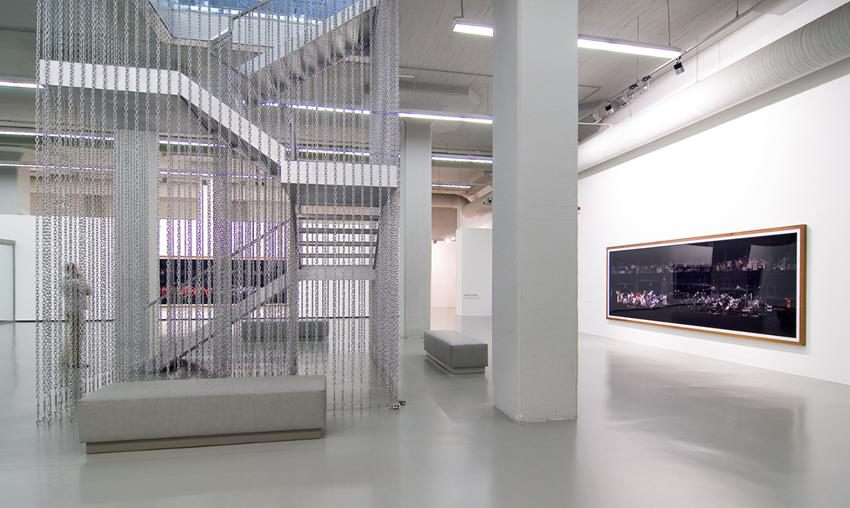- Closed Today
- Ticket
- Shop
- Membership
- TR EN
Andreas Gursky
Istanbul Modern held a retrospective exhibition of the globally renowned German photographer Andreas Gursky. Organized by the Haus der Kunst in Munich, it reflected at length, Gursky’s 23-year-old career through 35 photographs.
The selection of works in the exhibition displays Gursky’s unique vision of the diverse geographies of the world. Of these photographs, thirty are recent works made after his highly acclaimed retrospective at The Museum of Modern Art in New York in 2001. In their breadth, color and startling perspectives, these works give a comprehensive view of Gursky’s work extending from 1984 until today.
Andreas Gursky could be regarded as an exceptional hagiographer of the age of globalization. He focuses on disparate regions of the world and establishes surprising connections between them and, in the process, raises questions about the role of the individual in a world of economic and cultural integration. He frequently depicts human beings in the mass – rather as if they were ornamental abstractions - at raves, rock concerts or sports events, and, by doing this, indicates that globalized production not only generates new industrial products but also new images, representations, and subjective views.
Curator: Thomas Weski
About the artist:
Born in Leipzig in 1955, Andreas Gursky grew up in Düsseldorf, the only child of a successful commercial photographer, learning the tricks of that trade before he had finished High School. In the late 1970s, he spent two years at the Folkwangschule in Essen, which Otto Steinert had established as West Germany’s leading training ground for professional photographers, both artistic and documentary. At Essen, Gursky learned about the sophistication of unembellished observation - a straightforward outlook that was remote from the artificiality of commercial work. Finally, in the early 1980s, he studied at the famous Staatliche Kunstakademie in Düsseldorf, which, with such well-known professors as the artists Joseph Beuys, Sigmar Polke, and Gerhard Richter, had become the powerhouse for Germany's postwar avant-garde. There Gursky developed as an artist under the rigorous supervision of Hilla and Bernd Becher, whose taxonomic photographs of obsolete industrial buildings, machinery and sites were regarded as important expressions of Conceptual and Minimal art.
Initially opened at Haus der Kunst, where it has attracted record-breaking crowds, the exhibition also was held at the Sharjah Art Museum in the United Arab Emirates, following Istanbul Modern.
This exhibition was organized by Haus der Kunst, Munich with the collaboration of Istanbul Modern.
The artist is represented by Monika Sprüth & Philomene Magers / Cologne Munich London and Matthew Marks / New York.
